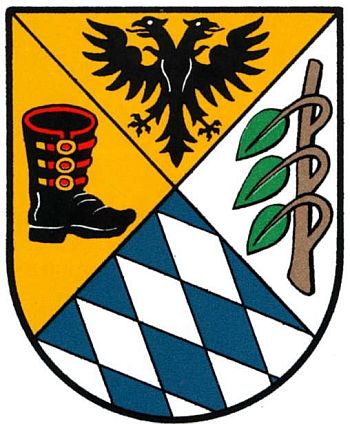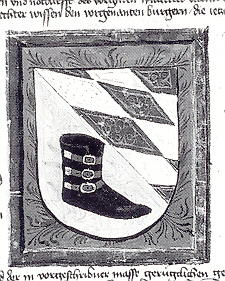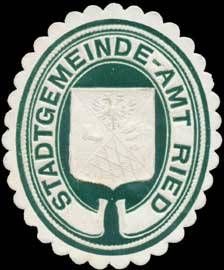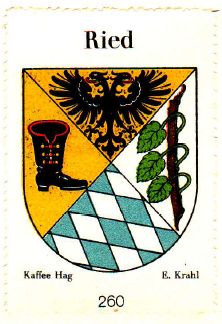Ried im Innkreis: Difference between revisions
Knorrepoes (talk | contribs) m (Text replace - "Austria - Österreichische Gemeindewappen" to "Austria - Österreichische Gemeindewappen") |
Knorrepoes (talk | contribs) m (Text replace - "{|width="100%" style="color:black; background-color:#ffffcc;" |width="15%"|50 px|left |width="70%" align="center" |'''Heraldry of the World<br>Civic heraldry of Austria - Österreichische Gemeindewappen''' |wid) |
||
| Line 1: | Line 1: | ||
{ | {{austria}} | ||
'''RIED IM INNKREIS''' | '''RIED IM INNKREIS''' | ||
Revision as of 09:02, 31 December 2014
RIED IM INNKREIS
State : Oberösterreich
District : Ried im Innkreis
Origin/meaning
The oldest known arms of Ried were granted on May 5, 1435, by Duke Heinrich IV of Bavaria, to which the area then belonged (the letter of patent still exists).
The arms show in the upper part the arms of Bavaria, and in the lower part a shoe (see below). The shoe is taken from the local story that Ried was founded by a miller's son. The shoe is supposedly a miller's shoe.
| The arms of Ried from 1435. |
The arms were still used on a seal from 1777, but after 1779, when Austria acquired the area, the arms were changed. The new seal of Ried, which dates from 1781, shows instead of the Bavarian diamonds, three red pales in silver, taken from the arms of Oberösterreich. The show in the lower part was replaced by a twig with three leaves. The latter was derived from the Anhanger family, who played a major role in the history of the town.
When Ried received city rights in 1857, the arms were changed again. The new arms were granted on March 16, 1859 and are still in use. Instead of the pales, the Austrian eagle was placed in the upper part. The three other symbols were taken from the older arms.
| The seal of the city from around 1900 |
The arms in the Coffee Hag album +/- 1932 |
Contact and Support
Partners:
Your logo here ?
Contact us
© since 1995, Heraldry of the World, Ralf Hartemink 
Index of the site
Literature : Baumert, H.E. : Oberösterreichische Gemeindewappen, Linz, 1996.













